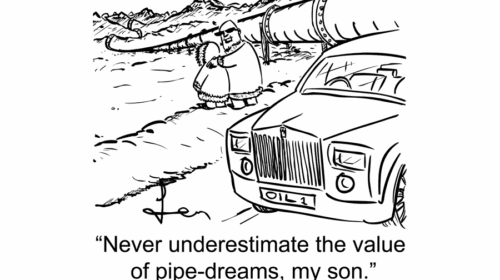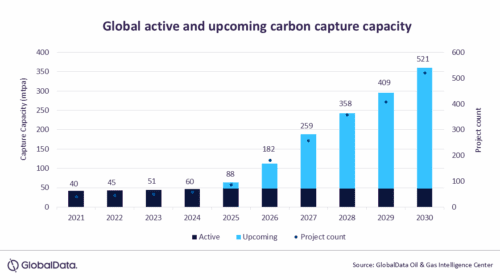One of the hazardous jobs in the world is working in an oil rig. It is why companies involved in the oil and mining industry are putting a strong emphasis on the safety of their workers. Because of that, the number of oil rig injuries and fatalities has decreased significantly over the last decade.
But still, oil and mining companies should always do their best to improve the safety of their workers and prevent injuries and fatalities on oil rigs as much as possible. If you want to keep your oil rig injury-free, you should follow these tips:
- Provide Proper Shelter For Your Workers
One of the best ways to ensure the safety of your workers on the site is to provide them with a proper shelter. Mining fabric buildings come up as one of the ideal shelters for your workers working on oil rigs and mining sites. They can also be used for equipment storage, garages and vehicle maintenance facilities, kitchen and dining facilities, health clinics, and recreational facilities for your workers.
It’s also important to teach your workers the significance of consistent housekeeping. Reduce the risk of minor and fatal accidents such as falling or slipping by keeping the work areas, pathways, shelters, and floors clear of unnecessary items.
- Promote A Safety-First Culture
Ensuring workplace safety, especially on rigs, is of utmost importance. It should be a top priority and instilled in the minds of everyone who’s working on the site, including the supervisors, managers, and workers.
As such, you need to consistently remind everyone working on the rig of the importance of maintaining workplace safety by adhering to all the rules and regulations and always be alert for any potential hazards.
The leadership should also serve as an example for setting a standard for safety on the oil rig. If the ones working above are committed to safety, the rest of the workers will follow suit. Workers might not buy-in with your safety-first culture if the rules and regulations aren’t followed by their superiors.
- Provide Proper Training For All Workers
Safety equipment minimizes the risk of injuries and fatalities on oil rigs. As such, they should always be available at all times on the worksite. It’s also essential to provide proper training for workers, so they’ll know how to use safety equipment and be ready should an emergency arises.
Proper training also plays a critical role in reducing the risks of accidents on oil rigs. Workers should know how to operate and maintain all the machines and heavy equipment on the worksite. Additionally, they should know how to tell if there’s a problem with particular equipment and how to respond to an emergency. Educate all workers about the evacuation protocols on the oil rig to reduce the amount of damage, injuries, and fatalities as much as possible.
Taking a shortcut and neglecting proper training can jeopardize the safety of your crew and the entire rig itself. You’ll also end up legally liable for any injuries and fatalities to your workers while they’re working on the rig.
- Wear Protective Gear All The Time
When you’re working on an oil rig, you must always wear your protective gear at all times. It includes wearing gloves, hard hats, respiratory masks, and eye protection.
Never get lazy when it comes to wearing protective gear, especially during work hours. Most workers think that it’s okay not to wear their protective gear after performing a task hundreds of times. However, this should not be tolerated. You’ll never know when a disaster strikes in an oil rig, so you should never let your workers be lax about protective gear.
- Do Regular Machine Maintenance
Conducting regular maintenance checks on all the machines and equipment should also be done to reduce the risk of injuries on the oil rig. It helps in preventing premature failure, which could result in explosions. Maintenance is also essential in keeping the machinery working at all times to avoid downtime.
Never allow risking the safety of your workers because of a worn-out machine part. That faulty part can have serious implications for everyone on the rig. As such, do your best to maintain all the machines and equipment on the rig to ensure a safer working environment.
You should also ensure that all the machines and equipment used on the rig are compliant with industry standards.
- Be Proactive In Monitoring The Mental Health Of Your Workers
Having a positive work culture on oil rigs that prioritizes safety over everything is essential. Eliminate that ‘tough guy’ stereotype that’s typically associated with people working in the oil industry by establishing an open, transparent, and united working environment through various training programs.
By doing so, your workers will trust your management more often, and it’ll be easier for them to open up to you about their mistakes, ask for help, seek advice, and obey rules.
- Encourage Safety Communication
You also need to ensure that all your employees are not afraid to speak up if they notice or see a problem. Any problem, especially safety, should be communicated right away to the site manager or supervisors for proper actions. It is to ensure that everyone on the site can attend to the issue and prevent it from escalating into a more serious problem, which can compromise the safety of the entire workforce.
Summing It All Up
No industry has risks. But the oil industry is on a different level when it comes to risks because of the number of potential hazards that can happen at any time on an oil rig. It is why all companies involved in the industry must prioritize safety above all. It’s a challenging task for the oil industry since most rigs are located hundreds of miles offshore. But if you follow these seven tips, you’re on your way towards a safer work environment and reduce the likelihood of accidents, injuries, and fatalities on your oil rig.
Oil and gas operations are commonly found in remote locations far from company headquarters. Now, it's possible to monitor pump operations, collate and analyze seismic data, and track employees around the world from almost anywhere. Whether employees are in the office or in the field, the internet and related applications enable a greater multidirectional flow of information – and control – than ever before.











1 comment
Comments are closed.